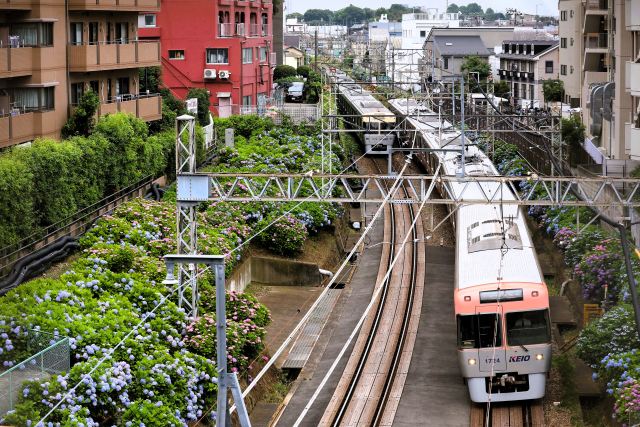On April 1st, Shin-Keisei Electric Railway Company was merged into Keisei Electric Railway Company. How are the former Shin-Keisei and Keisei lines doing now? I recently visited these lines to see for myself.
To start, let me review Shin-Keisei Electric Railway Company (hereafter Shin-Keisei). It was established in 1946 as an affiliate of Keisei Electric Railway Company (hereafter Keisei). In 1955, Shin-Keisei fully opened a 26.5-kilometer railway route between Matsudo and Keisei-Tsudanuma. Shin-Keisei then became a wholly owned subsidiary of Keisei in 2022 through a share exchange. This year, Keisei absorbed Shin-Keisei and became the larger Keisei Electric Railway Co., Ltd. The merger is expected to maximize synergies by enabling quicker decision-making. The former Shin-Keisei line has been renamed the “Keisei-Matsudo Line.”
Now, let’s move on to the main topic. I noticed that the train body colors on the Keisei-Matsudo Line have started to change. Please look at the top photo. This is trainset 8807 of the EMU 8800 series. During the Shin-Keisei era, it featured a pink-and-white two-toned design, but it is now light gray with red and blue stripes—the so-called “Keisei colors”. This color scheme will gradually be applied to all former Shin-Keisei trains.
On the other hand, changes on the Keisei lines themselves were relatively minor. New railway maps that include the “Matsudo Line” have been put up in trains and at stations. I also came across a train with a commemorative plate on the front (see the photo below). It was trainset 3030 of the EMU 3000 series, and the plate read, "Hello Matsudo Line".



















